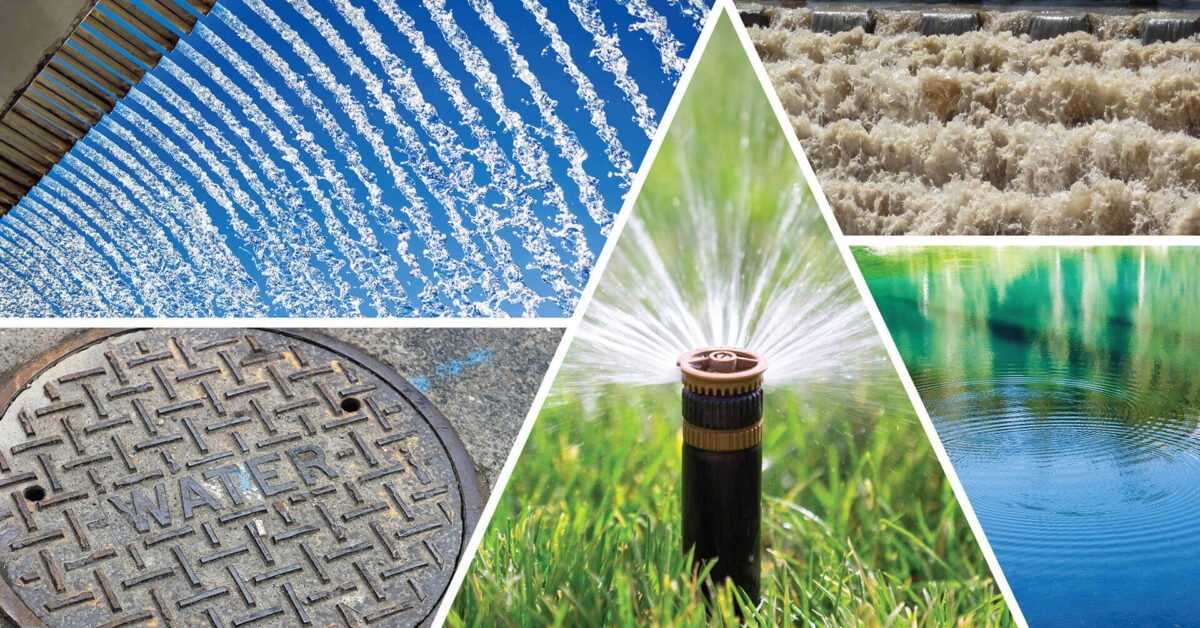Water is one of the most, if not the most, important natural resources we have. It is essential to human life and the ecosystem. This is why it is important we do our part to protect this resource and ensure availability in the years to come while the population continues to grow, especially since multiple regions in the U.S. are already experiencing the impact of water shortages.
Challenges
Waste
Waste is one of the biggest challenges the world faces in water conservation. Whether it is leaving faucets running while they are not being used, overwatering the lawn and/or inefficient appliances, water is being wasted at an alarming rate. The United States Environmental Protection Agency (EPA) estimates that the average family may waste up to 9,400 gallons of water per year related to water leaks alone (the equivalent to the amount of water needed to wash 300 loads of laundry) and that household leaks can waste approximately 900 billion gallons of water annually.1
Subsidence
The U.S. uses approximately 82 billion gallons of water per day of fresh groundwater for public supply, irrigation, livestock, manufacturing and more.2 In the Texas Gulf Coast Region, over pumping groundwater is the leading contributor to land subsidence. Subsidence is the gradual sinking or settling of the ground over time. This sinking occurs when water is withdrawn from the ground faster than it is replenished, causing the soil to physically compact. Texas is second in the U.S. when it comes to groundwater usage, and some areas in the Houston region have subsided more than 10 feet as a result of excessive pumpage.3 Finding alternative water sources, such as surface water and reclaimed water, will allow groundwater levels to replenish and help avoid detrimental impacts on future groundwater supplies and infrastructure.
Finding alternative water sources, such as surface water and reclaimed water, will allow groundwater levels to replenish and help avoid detrimental impacts on future groundwater supplies and infrastructure.
Solutions
Alternative Water Sources/Reclaimed Water
Thanks to scientific innovation, previously used water can be treated and then reused for a variety of purposes. Reclaimed water reduces potable water use by repurposing previously used water for applications such as irrigation and to fill amenity lakes. We can attest to the impact because BGE helped implement reclaimed water infrastructure for Cinco MUD 1, a Municipal Utiltiy District located in Fort Bend County. The infrastructure has provided nearly 700 million gallons of reclaimed water for irrigation since 2017 and helped the region draw closer to its reduced groundwater pumping mandate.
Enhanced Infrastructure
The country’s infrastructure needs a significant upgrade. Many states are currently suffering from the impacts of aging infrastructure, especially when it comes to drinking water and wastewater (Texas Infrastructure Report Card). Failing wastewater infrastructure leads to pollution of fresh surface water sources such as lakes, rivers and ponds. For context, Texas uses approximately 6.6 million acre-feet of surface water per year.4 Just one acre foot is equivalent to standing in the middle of a football field, with water almost touching your knees. Ensuring our surface water sources are protected from pollution is essential to the public health and water supply of the state.
Failing wastewater infrastructure leads to pollution of fresh surface water sources such as lakes, rivers and ponds.
As the water demand grows with the increasing population, so does the need to protect every gallon of water possible. Infrastructure enhancements – specifically replacing aging pipes – are one of the most effective ways to reduce water waste. Click here to learn more about the current state of the U.S.’ drinking water infrastructure.
Education
Addressing the water crisis isn’t just a task for engineers, scientists and environmentalists. It requires we all do our part to limit the amount of water we use. Helping individuals and governing bodies understand the importance of conservation and taking action takes consistent engagement and education. BGE’s work as program manager for the North Fort Bend Water Authority (NFBWA) is a great reflection of the impact a commitment to education and engagement could have if employed on larger scales.
What You Can Do
Now that you understand why it’s important to protect our water resources, we ask that you join us in observance of Water Quality Month and implement two to three of the following water-preserving changes into your daily routine. What can you implement today?
- Sign up to receive weekly watering advice for your landscape tailored to our region www.watermyyard.org.
- Learn how to correctly operate your sprinkler system controller here.
- Learn to identify and repair household leaks to prevent water waste.
- Look for the EPA WaterSense logo when upgrading appliances.
- Utilize native and adaptive plants around the garden to minimize water needs.
Sources


